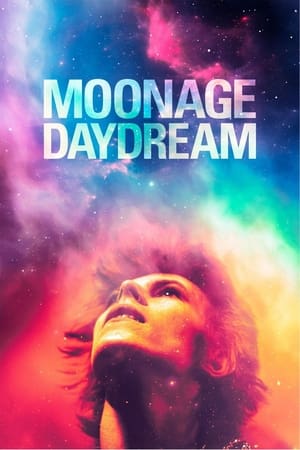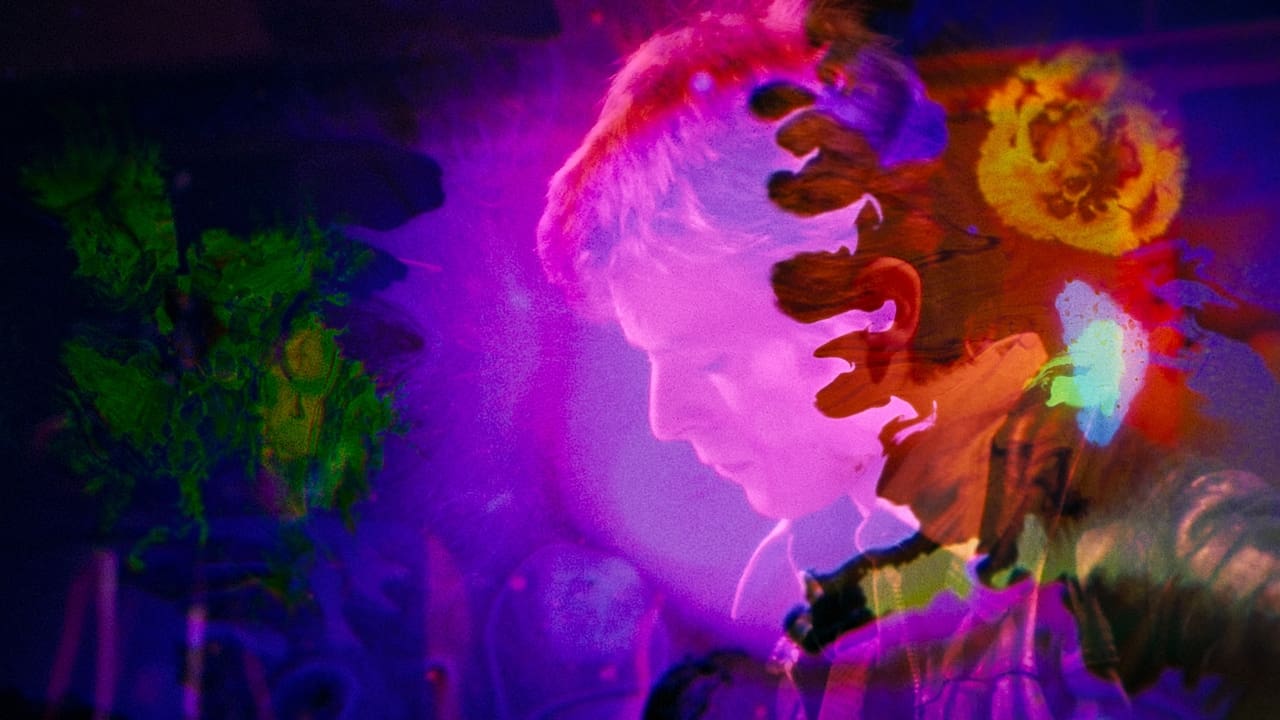
Woe betide anybody who sits down in front of Moonage Daydream expecting to learn something concrete about David Bowie. That’s not a criticism, let me hasten to clarify—expository documentaries generally leave me wishing that I’d read a book or lengthy article on the subject instead, and I was drawn to this film less as a Bowie fan (though I certainly am that) than as an admirer of the idiosyncratic and stubbornly cinematic docs made by its director, Brett Morgen. Morgen’s not interested in ladling out information with a superficial visual gloss; he always aims, first and foremost, to create something immersive and experiential, whether from protests and police violence at the 1968 Democratic National Convention (in 2007’s Chicago 10) or from Jane Goodall’s initial encounters with chimpanzees (in 2017’s Jane). I confess with some shame that I still haven’t seen what’s probably Morgen’s most celebrated work, June 17th, 1994 (2010), mostly because it was part of ESPN’s 30 for 30 series and I’m not even remotely a sports person. Even so, we’re talking about one of the few figures in contemporary non-fiction filmmaking—alongside such giants as Frederick Wiseman, Errol Morris, and Werner Herzog—who always gets my attention.
Moonage Daydream, however, may be too much of a good thing. Presumably, Morgen got the job at least in part as a result of having previously tackled Kurt Cobain’s life in the acclaimed 2015 doc Cobain: Montage of Heck—a subtitle that arguably fits this film even more snugly than that one. Both films are freewheeling, kaleidoscopic affairs that depict their subjects’ careers and travails in (mostly) chronological order but eschew any conventional topic-by-topic trajectory, instead associatively ricocheting from one striking fragment to the next. There are a couple of crucial differences, though. Cobain’s time in the spotlight was sadly brief, lasting roughly six years; Bowie was a cultural icon for nearly half a century, which means that, even at a somewhat exhausting 135 minutes, Moonage Daydream has no choice but to engage in some heavy-duty compression/omission. And while Montage of Heck features a treasure trove of home movies and other wholly personal items (notably Cobain’s notebooks), even the previously unseen archival footage and photos here consist of public appearances: concerts, TV interviews, so forth. Did you know that Bowie’s son directed Moon and Source Code and (for some reason) Warcraft? Nobody will learn it from this movie.
Again, that absence of biographical detail is very much by design. Morgen assumes that most people who’d see Moonage Daydream are already familiar with the Bowie basics, and so doesn’t bother to provide them; the film is aggressively devoid of context at all times, trusting us to either know or intuit everything important. Even Bowie’s music gets cursory treatment: I’m not confident that a single one of his 26 studio albums gets referred to by name, much less shown, and we never hear a note of monster hits like “Fame” (Bowie’s first American chart-topper) and the Queen collaboration “Under Pressure.” It’s Bowie’s thoughts (frequently heard as voiceover narration, excerpted from interviews) and personae (Ziggy Stardust, The Thin White Duke, his dapper New Romantic) that dominate, accompanied by a stroboscopic whirlwind of clips from his avowed cinematic influences—everything from sci-fi classics like Metropolis and 2001: A Space Odyssey to Kenneth Anger’s seminal underground short “Scorpio Rising.” Because Bowie acted in films himself on occasion, characters he played in The Man Who Fell to Earth, Merry Christmas, Mr. Lawrence, and Labyrinth are deployed as further illustrations of his own fluctuating headspace. And Morgen has assembled all of this in a style so adjacent to the bona fide avant-garde that I can’t imagine a mainstream audience tolerating it without the stabilizing anchor of a world-famous musician and his comfortingly familiar tunes.
Had some difficulty myself, to be honest. There are good reasons why avant-garde filmmakers tend to make shorts rather than features, and not all of those reasons are financial; two hours and 15 minutes of nearly free-floating images and sound bites can become numbing, offering little indication that it might not simply continue in that fundamentally shapeless vein forever. And for those viewers who are familiar with Bowie, what Morgen chooses to include vs. what he doesn’t can seem strangely arbitrary. (My guess is that he was guided by the quality of available material, which does make sense if you’re not worried about touching all bases.) We hear Bowie reminisce about working with Brian Eno in Berlin, for example, but not about how much his resurgent stardom in the early ‘80s owed to Nile Rodgers. Iman, his second wife, receives a tribute of sorts, but you’d never know that he was married to somebody else throughout the ‘70s…even though Angie Bowie was notable enough to have been played (more or less) by Toni Collette in Todd Haynes’ glam-rock film à clef Velvet Goldmine. And the film conveniently skips past everything between Let’s Dance and Bowie’s superb, almost-posthumous final album, Blackstar (released just two days before his death), implicitly suggesting that more than three decades’ worth of this chameleon’s nonstop creativity barely rates acknowledging.
I feel hypocritical focusing so heavily on what Moonage Daydream omits, having complained countless times about the tedious Wikipedia-style checklists that so many biographical documentaries favor. Morgen’s doing something genuinely ambitious with this film, for which he should be commended on principle alone. It’s just that I’d have preferred a movie with contours that are discernible to anyone besides Morgen (who edited Moonage Daydream himself), and one that doesn’t frequently settle for easy visual references, e.g. accompanying the title song’s lyric “Put your ray gun to my head” with a clip of the flying saucers from War of the Worlds shooting their death rays. (Morgen also leans surprisingly hard on the “Ashes to Ashes” video—admittedly one of the cooler things that aired on MTV way back in the day, but he basically just shows a lot of it for the benefit of viewers who weren’t around then.) At times, Moonage Daydream plays like a very expensive, highly professional version of the compilations that ardent fans of bands and artists create every day on YouTube. All the same, it’s not as if the film doesn’t deliver plenty of fantastic footage, or as if Bowie’s unforgettable music isn’t omnipresent on its soundtrack. Select theaters are showing the movie in IMAX, though it wasn’t shot with 70mm IMAX cameras—the idea is just to give you an opportunity to experience Bowie at maximum size and volume, in a context that’s chaotic enough to put you through the wringer. If you can fully surrender yourself to the free-associative onslaught, drink in the sheer provocative Bowie-ness of it all, little else will matter.
One of the first notable online film critics, having launched his site The Man Who Viewed Too Much in 1995, Mike D’Angelo has also written professionally for Entertainment Weekly, Time Out New York, The Village Voice, Esquire, Las Vegas Weekly, and The A.V. Club, among other publications. He’s been a member of the New York Film Critics Circle and currently blathers opinions almost daily on Patreon.






